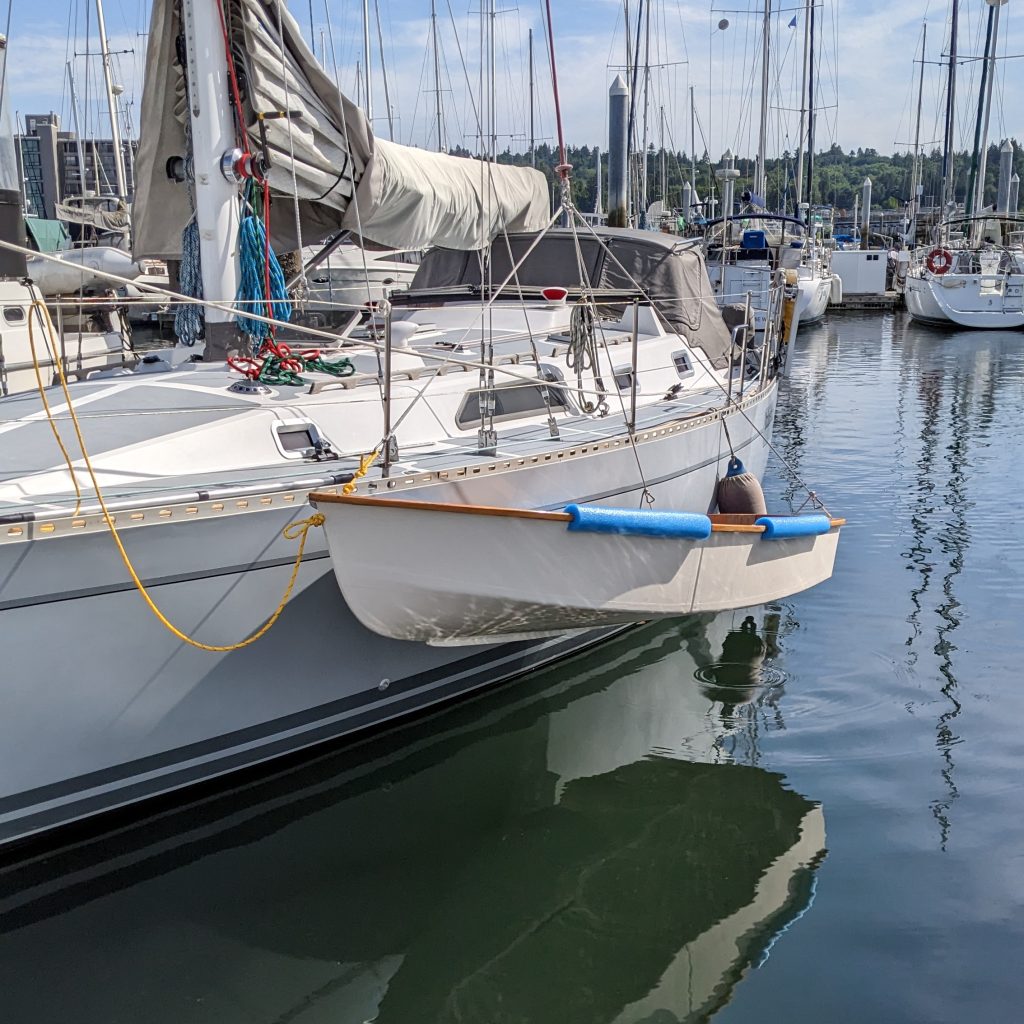After 10 years plus of using an inflatable dinghy the switch to a hard dinghy has meant a few adjustments to how I store it, stow it, and manage it under way. The Spindrift 10 is a fun combination of row boat, sailing dinghy, and outboard tender. Mine is a nesting version so it can be taken apart, flipped upside down, and nested together making it a small package that fits neatly on the foredeck.
I’ve now rowed it, sailed it and motored with it using the Torqeedo 3hp OB. So far, so good. I expected it to be different than the inflatable and it is. Getting in and out requires more care. It is not as forgiving of mishandling as my former a big rubber tubes of a dinghy, so driving it into the side of the mother ship is a bad idea. It will also get banged up when it goes to battle with an ugly dock. All expected. The reward is a dinghy that I can row and actually get someplace in. I can have fun with it as a sailboat! And, when needed, it moves along well with the little electric outboard.
Using the outboard on the Spindrift also highlighted the other big difference. Weight distribution matters. Moving to the center requires a tiller extension (I found one on Amazon that works). I get noticeably better performance from the OB doing that. With two people in the dinghy the extension wouldn’t be needed. The same challenge with weight distribution happens when rowing with a passenger . Whether the passenger is sitting in the bow or the stern, the balance of the dinghy is not ideal. We didn’t try two person rowing (side by side). That seemed like a friendship killer but it might work. If you have stuff to carry it could be used to balance the load.
The next big change was getting it on and off the mothership when towing is not prudent. The inflatable was always hoisted up by the towing bridle, bow first, and lowered onto the foredeck. This method is not really a good option with the Spindrift 10. The transom submerges and after lowering there is a good gallon or two of water to bail out. I also don’t like the idea of the hard dinghy swinging around in the wind which the inflatable often did. So I think the best option is to hoist it horizontally.

With some gunnel protection (trying out some jumbo pool noodles) installed and a Dynema hoisting rig the Spindrift comes up and over the lifelines and onto the deck with just a little persuasion. I can set it down there and undo the 5 fasteners holding the two halves together. The halves are light enough (guessing 40-50lbs each half) to easily flip, stack, then tie them down. The oars, three piece mast, boom, dagger board and rudder also need to get put away.
If you want to watch a great YT video of a cruising couple, Sailing Yacht Florence, with a Spindrift 9 here is the link. I should thank them for this as it was very helpful in my deciding to buy this dinghy from the person that originally built this one. Here is a link to their WP page on the same.
